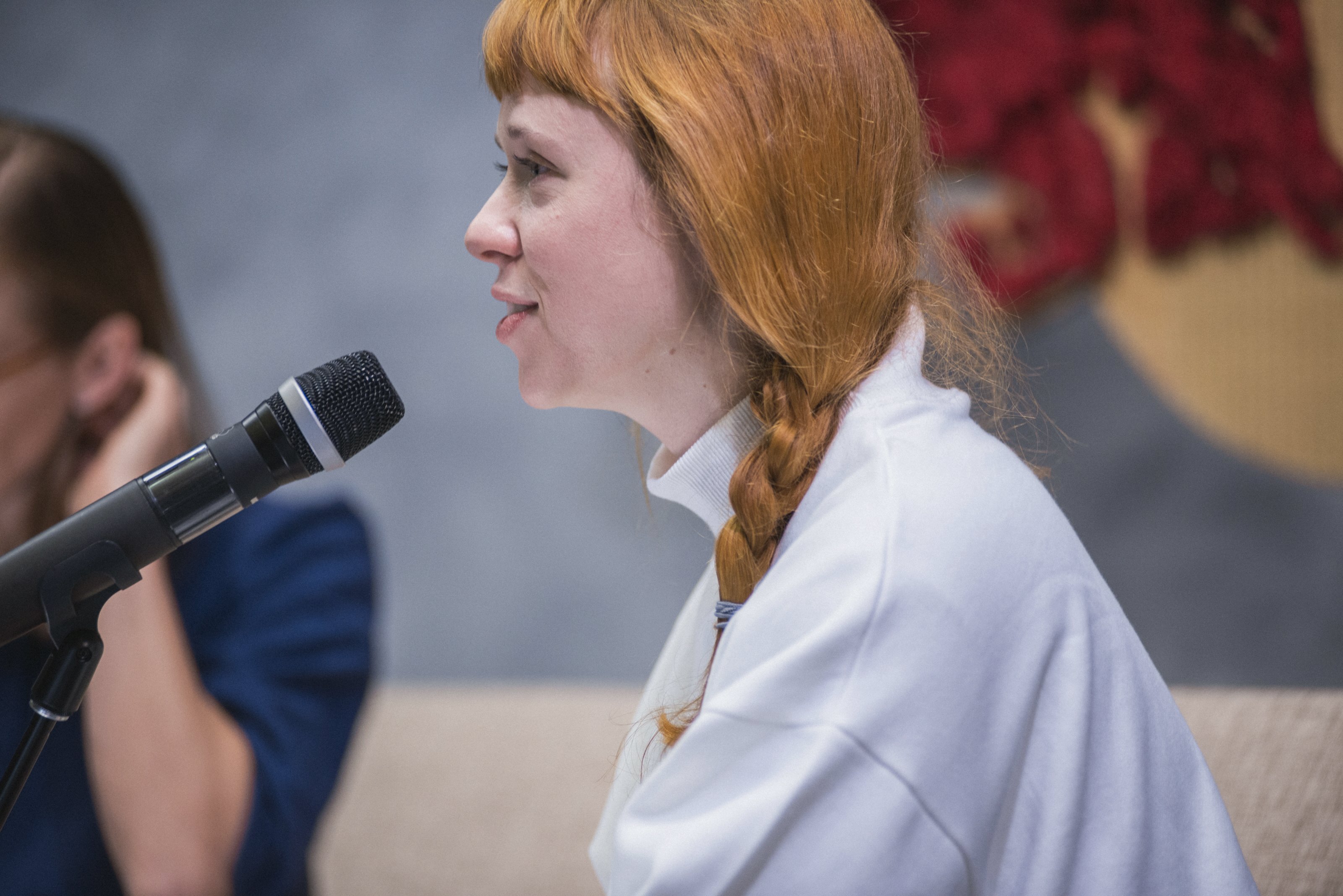Unpacking ASMR
Robert Barry explains the aural phenomenon and how it’s slowly making its way into song
There is a video on YouTube in which a woman speaks directly to the camera as if you – the viewer – have come to a tailor for a suit fitting. She speaks in a slightly dehydrated whisper, with lots of labial clicks, and takes elaborate care running her hands across the fabric of the suit. The video lasts 45 minutes and has been watched over four and a half million times.
There is another video where a man spends ten minutes scratching his own head and rubbing his hair between his fingers. There are several videos which roleplay trips to the hairdresser or the spa or the nail salon, some which promise five or ten or even 20 hours of gentle tapping on mundane objects. And there’s an incredible number of videos in which people slowly and carefully unpacking computers or games or sweets or medical instruments from cardboard boxes.
What all these videos have in common is a four letter abbreviation, usually found in the title or the meta-tags, which signals their appeal to a growing community of people for whom sound is a potential gateway for a unique source of physical pleasure. Those letters are ASMR and they stand for Autonomous Sensory Meridian Response, a term created in 2010 to describe a certain tingling sensation at the back of the neck or spine that seems to be triggered by certain kinds of whispery, crinkly or tapping sounds. Sometimes called a “brain orgasm,” it is immediate and visceral to those affected by such sounds and completely baffling to anyone who isn’t.
ASMR is not a clinical term and there is still almost no published research on the subject. But due to its winning combination of internet meme-ability and a peculiar attention to the physical effects and qualities of sound, it has proved irresistible material for an increasingly diverse array of artists. And sometimes in the places you might not expect.
About two and a half minutes into Deadmau5’s “Terrors in My Head,” a whispery voice can be heard above the throbbing synth bass. “Good morning,” the voice says. “It’s time to get up. Wake up! Good morning to you. Now that you’re waking up, let’s put a big smile on your face. Keep on smiling! Today’s going to be the best day of your life.”
The voice, though pitch-shifted and distorted by Zimmerman, was sampled from a video called “Wake up alarm tone. :)” posted about a year earlier by an ASMRtist with the handle GentleWhispering. She has over 200 videos on her YouTube channel, from “typing while chewing gum” to “dermatologist consultation in Russian.”
GentleWhispering is one of the most popular ASMRtists on YouTube with hits for some of her videos numbering up to three or four million. When she heard her track had been sampled by Deadmau5, she was clearly overwhelmed.
@deadmau5 used one of my audios and I am star strucking all over the place xO.. like I feel shaky :*D and excited <3 so amazing
— Maria GW (@GentleWhisperin) September 5, 2013Zimmerman himself apparently described her original video as “creepy as fuck.”
Holly Herndon’s 2015 album Platform, meanwhile, features a collaboration with Berlin-based artist Claire Tolan called “Lonely at the Top” that bustles with clicky, top-end sounds. It’s a largely spoken word track in which a female narrator (played by Tolan) addresses a stressed-out executive in increasingly fawning tones. “We wrote the song together on [Herndon’s] nice balcony overlooking Hasenheide [in Berlin],” Tolan explained to me via email. “Then I recorded the voice and sounds with binaural mics at home.”
They had been introduced by Herndon’s partner Mat Dryhurst and quickly started discussing their mutual fascination with ASMR. “At some point during our correspondence,” writes Tolan, “Holly mentioned that she had just read an article about the coping strategies developed by the extremely wealthy to justify their status. She suggested that we make the piece a kind of ‘therapy for the 1%’: an anxiety-relieving ASMR track that instructs the wealthy not to worry about it – it’s not their fault!” The idea immediately clicked with Tolan’s own fascination with alpha-male self-validation videos in which slightly robotic voices hypnotically repeat ego-bolstering statements like “I am a natural leader.”
Though “Lonely at the Top” is evidently intended as a critical work, Tolan is quick to point out that it is “not a critique of ASMR, but rather a critique of the abiding mantras with which the extremely wealthy justify their privilege. ASMR is a wonderful medium for delivering critique, because I can say anything – as long as I say it in the right, soft tone.”
For nearly two years now, Tolan has hosted an ASMR show on Berlin Community Radio called You’re Worth It. She had discovered the phenomenon on YouTube in the summer of 2013 and was “fascinated by the breadth of subject matter and sounds in ASMR videos. I realised that it was something that could be viewed from more than one angle.”
As she became more interested, a radio show seemed to offer a route into working with such sounds herself. “A lot of the power of the videos lies in the seduction of the visual elements,” she explains, “and I was interested in what would happen to the sounds if they were divorced from this visual grounding.”
[This is something] clearly connected to our time and that seems to say something about our desires.
Another artist engaging with ASMR is the composer Neele Hülcker. In a few weeks time, Hülcker will be performing at the London Contemporary Music Festival at Ambika P3, near Marylebone, attempting to transfer “the online-phenomenon into a live situation. I will have some online ASMRtists at my side, as well as some hairy guests, and we’ll create a kind of overdose of ASMR together.”
Hülcker first fell in love with the “great soundworld and bizarre characters” of the ASMR community after reading a newspaper article two or three years ago. As a composer, she was taken by its focus on close listening, but also the way ASMR videos are able to look at “everyday objects from a completely different perspective [with] people from all kind of different backgrounds rediscovering and re-appropriating their environment.” For her, it’s something “clearly connected to our time and that seems to say something about our desires” that relates to “consumption, post-pornography, fetish and staging intimacy... human beings spending their lifetimes on the internet, having an internet identity.”
ASMR found a home on the internet, and there, too, it found a name and a community. “One of the wonders of the internet,” Tolan says, “is the way it allows bored people to discuss mundanities without geographic constraint.” But more profoundly, she believes the secondary effects of ASMR, less as a source of tingles but more a kind of “amateur healing via relaxation,” attempt to address a range of illnesses “that are hugely symptomatic of our contemporary moment – anxiety, insomnia, depression, isolation.”
Composer Jocelyn Morlock is the current composer-in-residence at Vancouver Symphony Orchestra. Earlier this year, she presented a new work for the orchestra called That Tingling Sensation, inspired by the ASMR videos she stumbled across on the internet. “I was not at all scientific about my method,” she admits. “I tried to write sounds that reminded me of whispering and tingling.”
I wasn’t able to attend the premiere of That Tingling Sensation in January, but based on the few short excerpts the composer emailed me, there’s certainly a lot of rustling and fluttering sounds, tremulous percussion rolls and the papery crinkle of violin strings struck col legno with the wooden backs of their bows. It sounds almost like Prokofiev re-scored by Helmut Lachenmann.
For Morlock, her interest in the ASMR community was initially aroused by the question of “how music or sounds make people’s hair stand up. The physical manifestation of emotion,” she says, “fascinated me.” But even if her music might not produce the immediate visceral gratification of the countless unpacking videos and massage parlour roleplays, it’s evidently introduced the composer to a new sound world – one she’s keen to return to. “The audience responded positively,” she tells me regarding that premiere in January, “although I don’t think their hair stood up necessarily.”

